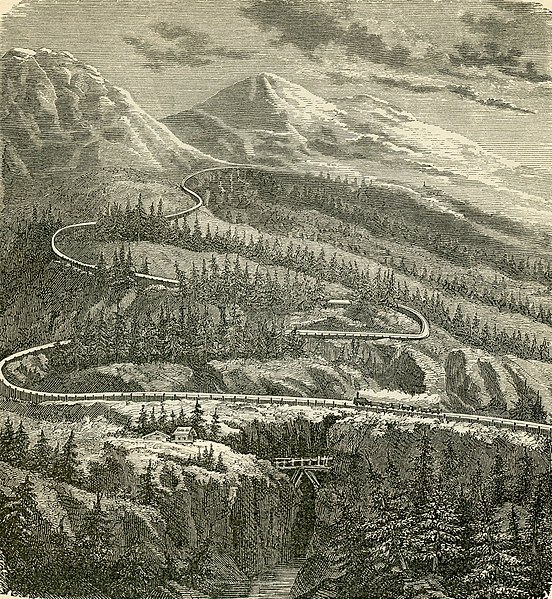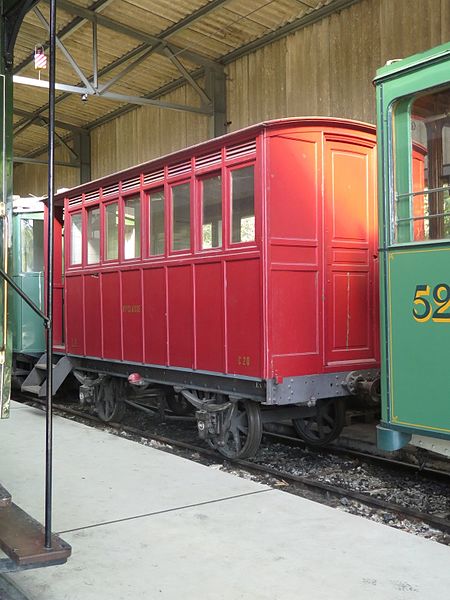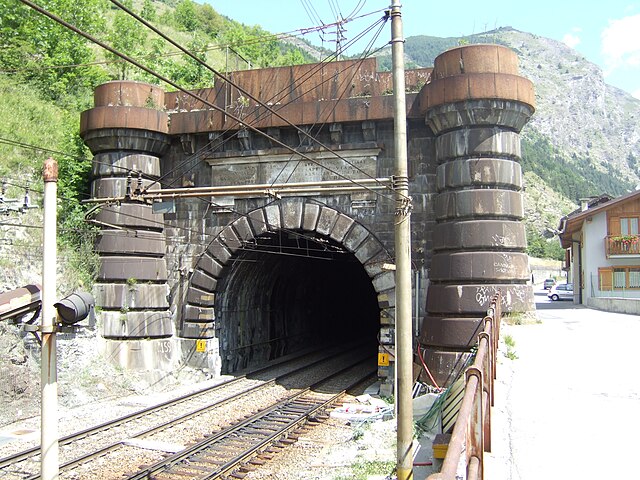The Mont Cenis Pass Railway operated from 1868 to 1871 during the construction of the Fréjus Rail Tunnel through the Alps between Saint-Michel-de-Maurienne, southeast France and Susa, Piedmont, northwest Italy. It was designed by John Barraclough Fell and his three-rail design was used on some other mountain railways. The railway was 77 kilometres long, with a gauge of 1,100 mm. The height at the summit was 2,283 metres (7,490 ft) and the maximum gradient was 9 per cent. It was used to transport English mail to India as part of the 1,400-mile (2,300 km) All Red Route.
Woodcut from 1880 showing the terrain, with the railway and road following the same alignment
Fell system engine, with typical train of three passenger cars, a luggage van, and a guard's van with ducket
Mont Cenis Railway passenger car, preserved at the Blonay–Chamby Museum Railway
Section of line with a metal avalanche shed
The Fréjus Rail Tunnel is a rail tunnel of 13.7 km (8.5 mi) length in the European Alps, carrying the Turin–Modane railway through Mont Cenis to an end-on connection with the Culoz–Modane railway and linking Bardonecchia in Italy to Modane in France. Its mean altitude is 1,123 metres (3,684 ft) and it passes beneath the Pointe du Fréjus and the Col du Fréjus.
The Italian Portal of the Fréjus Rail Tunnel
The original portal on the French side of the tunnel
Ouvrage Saint-Antoine, overlooking the Fréjus Tunnel portal on the French side







